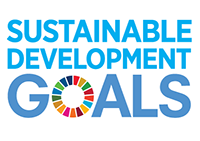Median Household Income (after-tax)
Definition:
Median household income (after-tax)
Methods and Limitations:
A household refers to a person or group of persons who occupy the same dwelling and do not have a usual place of residence elsewhere in Canada or abroad. The dwelling may be either a collective dwelling or a private dwelling. The household may consist of a family group such as a census family, of two or more families sharing a dwelling, of a group of unrelated persons or of a person living alone. Household members who are temporarily absent on reference day are considered part of their usual household.
Total income – The sum of certain incomes (in cash and, in some circumstances, in kind) of the statistical unit during a specified reference period. The components used to calculate total income vary between:
- statistical units of social statistical programs such as persons, private households, census families and economic families;
- statistical units of business statistical programs such as enterprises, companies, establishments and locations;
- statistical units of farm statistical programs such as farm operator and farm family.
In the context of households, total income refers to receipts from certain sources of all household members, before income taxes and deductions, during a specified reference period.
The monetary receipts included are those that tend to be of a regular and recurring nature. Receipts that are included as income are:
- employment income from wages, salaries, tips, commissions and net income from self-employment (for both unincorporated farm and non-farm activities);
- income from investment sources, such as dividends and interest on bonds, accounts, guaranteed investment certificates (GICs) and mutual funds;
- income from employer and personal pension sources, such as private pensions and payments from annuities and registered retirement income funds (RRIFs);
- other regular cash income, such as child support payments received, spousal support payments (alimony) received and scholarships;
- income from government sources, such as social assistance, child benefits, Employment Insurance benefits, Old Age Security benefits, COVID-19 benefits and Canada Pension Plan and Québec Pension Plan benefits and disability income.
Receipts excluded from this income definition are:
- one-time receipts, such as lottery winnings, gambling winnings, cash inheritances, lump-sum insurance settlements and tax-free savings account (TFSA) or registered retirement savings plan (RRSP) withdrawals;
- capital gains because they are not by their nature regular and recurring. It is further assumed that they are more relevant to the concept of wealth than the concept of income;
- employers’ contributions to registered pension plans, Canada Pension Plan, Québec Pension Plan and Employment Insurance;
- voluntary inter-household transfers, imputed rent, goods and services produced for barter and goods produced for own consumption.
After-tax income – Total income less income taxes of the statistical unit during a specified reference period. Income taxes refers to the sum of federal income taxes, provincial and territorial income taxes, less abatement where applicable. Provincial and territorial income taxes include health care premiums in certain jurisdictions. Abatement reduces the federal income taxes payable by persons residing in Quebec or in certain self-governing Yukon First Nation settlement lands.
Median income – The median income of a specified group is the amount that divides the income distribution of that group into two halves, i.e., the incomes of half of the units in that group are below the median, while those of the other half are above the median. Median incomes of households are calculated for all units, whether or not they had income.
For the 2021 Census, the reference period for income data is the calendar year 2020, unless otherwise specified. For the 2016 Census, the reference period is the calendar year 2015 for all income variables. For the 2011 Census, the reference period is the calendar year 2010 for all income variables, and for the 2006 Census, the reference period is the calendar year 2005 for all income variables.
Sources:
Statistics Canada. 2022. (table). Census Profile. 2021 Census of Population. Statistics Canada Catalogue no. 98-316-X2021001. Ottawa. Released September 21, 2022.
Statistics Canada. 2017. Canada [Country] and Canada [Country] (table). Census Profile. 2016 Census. Statistics Canada Catalogue no. 98-316-X2016001. Ottawa. Released November 29, 2017.
Statistics Canada. 2013. Canada (Code 01) (table). National Household Survey (NHS) Profile. 2011 National Household Survey. Statistics Canada Catalogue no. 99-004-XWE. Ottawa. Released September 11, 2013.
Statistics Canada. 2007. Canada (Code01) (table). 2006 Community Profiles. 2006 Census. Statistics Canada Catalogue no. 92-591-XWE. Ottawa. Released March 13, 2007.

 Median Household Income (after-tax) in the Sustainable Development Goals
Median Household Income (after-tax) in the Sustainable Development Goals
Click on the SDG to reveal more information
1. End poverty in all its forms everywhere
Extreme poverty rates have been cut by more than half since 1990. While this is a remarkable achievement, one in five people in developing regions still live on less than $1.90 a day, and there are millions more who make little more than this daily amount, plus many people risk slipping back into poverty.
Poverty is more than the lack of income and resources to ensure a sustainable livelihood. Its manifestations include hunger and malnutrition, limited access to education and other basic services, social discrimination and exclusion as well as the lack of participation in decision-making. Economic growth must be inclusive to provide sustainable jobs and promote equality.

